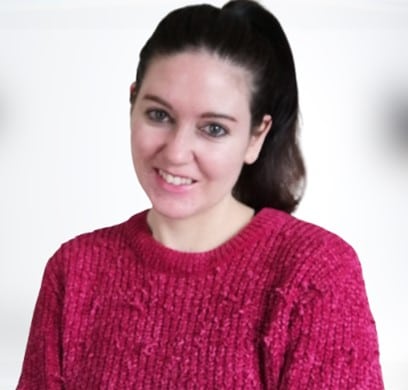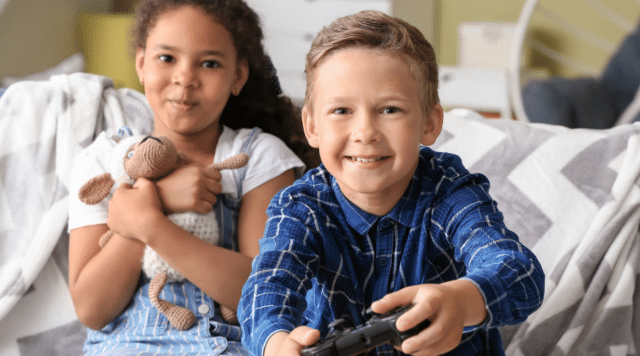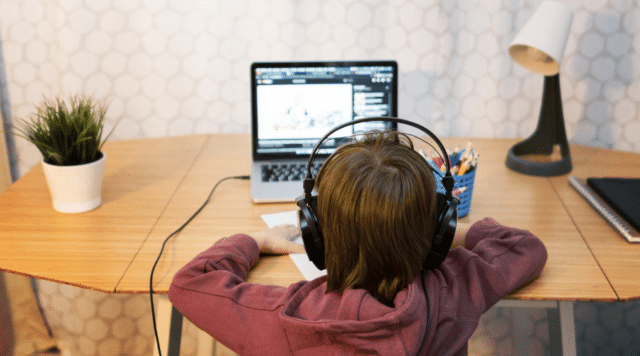
But researcher Sara Meyer reminds us to consider the goals and experiences of Autistic youth when thinking about friendships and relationships. Here she shares some lived experience and recent research on autistic socialising and friendships for Autistic youth.
Research suggests that Autistic people do not differ from non-Autistic people in their desire for friendships and relationships, especially from adolescence onwards (Cresswell, Hinch & Cage, 2019). They may, however, face barriers to building and maintaining those relationships because of differences in the way they socialise and communicate. On average, while most do have at least one friend, Autistic youth often have fewer friends than non-Autistic youth. They may also find the friendships that they do have confusing, overwhelming, or difficult to navigate (Petrina et al., 2014).
When we think about how to support Autistic young people in their friendships and relationships, it’s important to consider the goals of the Autistic person in question. Rather than trying to ‘force’ a neurotypical (non-Autistic) style of friendship or interaction, we need to understand that Autistic friendship and social connection may look different to what we might expect. It may, for example, be much easier for an Autistic person to achieve a level of social interaction that they are satisfied with than it is for some neurotypical people. Lived experience and recent research highlight the following themes around Autistic socialising and supporting friendships and relationships for Autistic youth.
Connection with other Autistic people
Recent research has focused on the degree to which Autistic people can benefit from socialising with other Autistic people. Autistic participants in several studies, have said that they feel increased comfort, ease, and competence when interacting with other Autistic people as compared to neurotypical people (e.g., Crompton et al., 2020).
These findings may be explained by the double empathy problem, which describes a two-way barrier to communication and understanding between Autistic and neurotypical people. It is well-known that Autistic people struggle to understand the intent, body language, facial expressions, gestures, and communication styles of neurotypical people. Research is increasingly emphasising, however, that this lack of understanding goes both ways. Just as Autistic people struggle to understand neurotypicals and often misinterpret them, neurotypicals also struggle to understand Autistic people, and frequently believe the worst of them (Milton, 2012).
A study of first impressions found, for example, that neurotypical people tend to react negatively to Autistic people, rating them as awkward or lacking in empathy (Alkhadi et al., 2021), and may be less willing to interact with them (Sasson et al., 2017). When Autistic people socialise with other Autistic people, this empathy barrier is not present, and connection tends to flow more naturally. According to the study by Crompton and colleagues, such interactions are described by Autistic adults and young people as:
- Less exhausting.
- Less stressful than socialising with neurotypical people, who are “harder to read” and more easily offended.
- Simpler.
- Familiar in terms of conversational style / communication patterns.
- Easier to understand- “I have a better idea of what (other Autistic) people mean.”
Participants also reported feeling a sense of belonging and understanding. They were able to be their authentic Autistic self. As one participant said, “We simply allow each other to be and accept everything that we are.”

A group of friends enjoy a cafe
Shared interests
Another theme that emerged as central to Autistic social connections and friendships was shared interests. In our Autistic Advisory group, one Autistic advisor mentioned that what helped them most in forming friendships and peer relationships was finding shared interests and spending structured time together. Another of our advisors has written an article about how connecting through Dragon Ball Z helped them make connections during high school. You can read this article here:
How Dragon Ball Z got Timothy through high school – Altogether Autism
This emphasis on shared interests is also present in the literature around social skills interventions for Autistic children and young people. In one study, parents of Autistic children reported that their children spent the majority of their time with friends playing games, especially video games and board games (Bauminger & Shulman 2003). Kuo and colleagues (2013) found the same pattern amongst Autistic adolescents, who reported spending most of their time with friends playing video games, doing structured physical activities, or watching television. Autistic adolescents who played video games with their friends were more satisfied with their friendships than those who did not. Finally, Autistic university students in the study by Goddard & Cook said that joining clubs related to their interests helped them make friends and form social connections (2022).
These findings challenge non-Autistic perceptions of friendship and connection. Many parents do not feel that time spent playing video games together is “quality time”, but these results suggest that this time is in fact highly meaningful for building strong friendships.
Fostering authentic Autistic connections
A growing body of research has emphasised differences between Autistic and neurotypical styles of socialising and connecting with peers. As one of our Autistic advisors mentioned, there is increasing evidence that Autistic people approach friendships and relationships differently, define friendship differently, and utilise a different set of social skills compared to neurotypical people (O’Hagan & Hebron, 2017). From research, these differences seem to include:
- Spending less time overall with friends and peers, while still considering them friends (Calder, Hill & Pellicano, 2013). This suggests that Autistic people may prefer friendships that are lower maintenance.
- Parallel play as a valid and meaningful form of social interaction (O’Hagan & Hebron, 2017). This suggests that social interaction may not need to be as direct or involved in order to be fulfilling for an Autistic person. This was also highlighted by one of our Autistic advisors.
- Different ways of defining friendship- for example, more emphasis on practical support and shared interests, less emphasis on emotional intimacy and duration of the friendship.
- Friendships that don’t look like friendships to neurotypical parents, caregivers, and teachers.
- A more variable attitude to friendships, where some Autistic people found socialising draining and exhausting and preferred to be alone, others wanted to have friends.
These differences have been described as a difference in disposition, rather than as a lack in social communication (Milton, 2014). They may give rise to a unique set of social skills, which we can think of as natural Autistic social skills. These skills may be more in the areas of direct communication, literal or verbal communication (rather than communication that relies on body language or non-verbal cues), and information sharing, as opposed to sharing emotional or personal information. Unfortunately, these strengths and preferences are not always recognised or appreciated by neurotypical people, and may create an expectation that the Autistic person needs to change or adapt in order to have successful friendships.

A young boy and girl play video games together.
Safe people in safe places
According to Gurbuz and colleagues, Autistic people report a lot of anxiety while socialising. They may overthink social situations, misjudge social cues, struggle to think of what to say, have difficulty saying what they are thinking, find socialising mentally draining, and struggle to work out how often or how much to talk (2018). Around half of all Autistics say they have social anxiety (Spain et al., 2018).
With this in mind, it is important for Autistic people to find safe people and safe places for socialising. This was a key theme for many of our Autistic advisors, who said it was important to them to find a safe person who understood them within a group of people and to spend time with just one or two other people at a time. One advisor said that “it is helpful to have someone you know and trust to fall back on in situations like a party.” Another commented that “(socialising with just one person) is less overwhelming. I would experience social anxiety, confusion, over-thinking, and fight / flight / freeze / fawn responses with more than one peer at a time.”
In the study by Crompton and colleagues, many Autistic participants felt that the places that neurotypicals wanted to socialise were inaccessible for them- they were often too noisy or crowded (2020). They wished neurotypical people would take their needs and challenges into account when setting up social situations. Pubs were highlighted as especially difficult.
Connecting online
Many Autistic people find that socialising online presents a way around some of these challenges. Online support groups provide a rich opportunity for Autistic people to share experiences, as well as to give and receive advice, emotional support, and information. More generally, online interaction may be more accessible for Autistic people because:
- The rules of engagement are more explicit.
- Communication is primarily verbal.
- The Autistic person is not always required to respond in real time and therefore has more time to process and think about what they want to say.
- There is some distance between the individuals who are communicating.
Online groups may also help Autistic people connect with others who share their interests.

A young person uses a computer to meet new people.
In summary
Supporting autistic youth with friendships and relationships involves ensuring we are being guided by their desires and goals, not what we think is best.
Takeaway tips to help Autistic youth who want to increase their connections with others:
- Support them to connect with other Autistics.
- Connect through shared interests.
- Help them identify safe people and safe places.
- Help them identify what would support them best.
References
Alkhaldi, R. S., Sheppard, E., Burdett, E., & Mitchell, P. (2021). Do Neurotypical People Like or Dislike Autistic People?. Autism in adulthood : challenges and management (3). https://doi.org/10.1089/aut.2020.0059
Bauminger, N. & Shulman, C. 2003. The Development and Maintenance of Friendship in Highfunctioning Children with Autism: Maternal Perceptions. Autism 7: 81
Calder, L., Hill, V., & Pellicano, E. (2013). ‘Sometimes I want to play by myself’: Understanding what friendship means to children with autism in mainstream primary schools. Autism, 17(3), 296–316.
Cresswell, L., Hinch, R., & Cage, E. (2019). The experiences of peer relationships amongst autistic adolescents: A systematic review of the qualitative evidence. Research in Autism Spectrum Disorders, 61, 45-60.
Crompton, C. J., Hallett, S., Ropar, D., Flynn, E., & Fletcher-Watson, S. (2020). ‘I never realised everybody felt as happy as I do when I am around autistic people’: A thematic analysis of autistic adults’ relationships with autistic and neurotypical friends and family. Autism, 24(6), 1438-1448. https://doi.org/10.1177/1362361320908976
Goddard, H., & Cook, A (2022). “I Spent Most of Freshers in my Room”—A Qualitative Study of the Social Experiences of University Students on the Autistic Spectrum. J Autism Dev Disord 52, 2701–2716. https://doi.org/10.1007/s10803-021-05125-2
Griffiths, S., Allison, C., Kenny, R., Holt, R., Smith, P., Baron-Cohen, S. (2019). The Vulnerability Experiences Quotient (VEQ): A study of Vulnerability, Mental Health, and Life Satisfaction in Autistic Adults. Autism Research (12, 9). https://doi.org/10.1002/aur.2162
Gurbuz, E., Hanley, M., & Riby, D. (2018). University students with autism: The social and academic experiences of university in the UK. Journal of Autism and Developmental Disorders, 49(2), 617–631. https://doi.org/10.1007/s10803- 018-3741-4
Kuo, M. H., Orsmond, G. I., Coster, W. J., & Cohn, E. S. (2014). Media use among adolescents with autism spectrum disorder. Autism, 18(8), 914-923. https://doi.org/10.1177/1362361313497832
Lorenc, T., Rodgers, M., Marshall, D., Melton, H., Rees, R., Wright, K., & Sowden, A. (2018). Support for adults with autism spectrum disorder without intellectual impairment: Systematic review. Autism, 22(6), 654-668.
Miller, D., Rees, J., & Pearson, A. (2021). “Masking Is Life”: Experiences of Masking in Autistic and Nonautistic Adults. Autism in adulthood : challenges and management, 3(4), 330–338. https://doi.org/10.1089/aut.2020.0083
Milton, D, (2012) On the ontological status of autism: the ‘double empathy problem’. Disability & Society, 27 (6).
Milton, D. E. (2014). Embodied sociality and the conditioned relativism of dispositional diversity. Autonomy, the Critical Journal of Interdisciplinary Autism Studies, 1(3), 1-7.
O’Hagan, Siobhan; Hebron, Judith (2016). Perceptions of friendship among adolescents with autism spectrum conditions in a mainstream high school resource provision. European Journal of Special Needs Education, (), 1– 15. doi:10.1080/08856257.2016.1223441
Petrina, N., Carter, M., & Stephenson, J. (2014). The nature of friendship in children with autism spectrum disorders: A systematic review. Research in Autism Spectrum Disorders, 8(2), 111-126.
Sasson N. J., Faso D. J., Nugent J., Lovell S., Kennedy D. P., Grossman R. B. (2017). Neurotypical peers are less willing to interact with those with autism based on thin slice judgments. Scientific Reports, 7, 40700.
Spain, D., Sin, J., Linder, K., McMahon, J. & Happe, F. (2018). Social anxiety in autism spectrum disorder: A systematic review, Research in Autism Spectrum Disorders (52). https://doi.org/10.1016/j.rasd.2018.04.007
Sutton, B. M., Webster, A. A., & Westerveld, M. F. (2019). A systematic review of school-based interventions targeting social communication behaviors for students with autism. Autism, 23(2), 274-286.
Wright, B., Kingsley, E., Cooper, C., Biggs, K et al. (2023). I-SOCIALISE: Results from a cluster randomised controlled trial investigating the social competence and isolation of children with autism taking part in LEGO® based therapy (‘Play Brick Therapy’) clubs in school environments. Autism, 27(8), 2281-2294. https://doi.org/10.1177/13623613231159699


